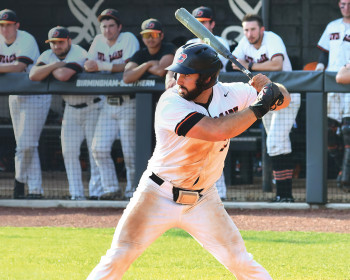Stephen Dow Beckham

Pamplin Professor of History
Years of Service: 34
Joining Lewis & Clark: I had been teaching at Linfield College in McMinnville, when the Lewis & Clark administration decided it would be logical and appropriate to offer courses on Native Americans, the Pacific Northwest, and the American West. I was hired in 1977. Over the years, I’ve had the opportunity to teach in the undergraduate college, the graduate school’s teacher education program, and the law school’s Indian law program.
Favorite courses: For seven summers, I teamed up with the college’s sailing instructors and taught Indians of the Northwest Coast, a field-based course in British Columbia. Also, on five occasions, I taught a course called On the Trail of Lewis and Clark. We retraced the explorers’ route, often on horseback, from the Bitterroot Mountains of Montana to the Pacific Ocean.
But the course I’ve heard the most about from former students—the one they say changed their lives or made their careers possible—was Historical Materials. It’s a course in research methods. When I came to the college, the focus of the seminar was exclusively on bibliography or bibliographical method, but I quickly transformed it into a course that was based upon this philosophy: “If you can imagine a source exists, it probably does exist, and then your job is to find it.”
Affirmation of passion for teaching and research: In 1998, I spent 102 days with 25 students in East Africa. Our ultimate adventure was climbing Mount Kenya, which is one mile higher than Mount Hood. A particularly memorable moment was being on the peak of the mountain at dawn. The sun came up over the Indian Ocean, sending ripples of light across East Africa and illuminating Mount Kilimanjaro to the south. That study program provided a very interesting collective learning encounter with history, culture, language, and the environmental setting of East Africa.
Most memorable moment: There have been many. Certainly being named the Pamplin Professor of History, the first of a dozen or so endowed chairs at the college, was important to my life and career. I was also honored to be named the Oregon Professor of the Year, the recipient of the American Historical Association’s Asher Distinguished Teaching Award, and the recipient of the Earle A. Chiles Award for “contributions to the understanding of the high desert interior of the American West.” In 2010, I delivered the Throckmorton Lecture in History, at the request of my colleagues in the history department. In some 46 years, this was the first time a member of the department had been tapped to deliver the lecture.
People might not know … My wife and I have a beach home in Neskowin. I’m often working in the garden there. This year, it’s Bambi versus the professor—deer and I don’t get along. We’ve seen bears, cougars, and whales. We’re right at the oceanfront, so we just walk down across two lawns, and we’re on the beach.
Favorite place on campus: Whenever I come to Lewis & Clark, I always park, if possible, at the margin of campus so I can walk through this beautiful setting.
What I will miss: One of the great joys of teaching is engaging in advising. I would look a student in the eye and say, “What do you like most? What do you do best? Let’s see if we can’t find courses that match your interests and successes.”
When all else failed, I had a little box on my desk. Inside it was a crystal. I would take the lid off and say, “All right, we’ve talked all around this. I don’t see anything happening, so let’s look into this crystal and tell me about your future.”
I always tried to do this with a bit of cheer because I’ve found that many students enter college with preconceived notions of what their careers are going to be. The beauty of a liberal arts education is that they have the opportunity to sample a number of wares, a number of fields of study. To me, that has been one of the real joys of working here: launching many, many careers—hundreds, thousands of them, I suppose.
I’m most proud of: Even though my career has been that of a classroom teacher, not an administrator, I am proud of the fundraising I’ve been able to do. I coauthored two successful National Endowment for the Humanities grants; I helped secure the gifts of the libraries of John and LaRee Caughey and the libraries of Dr. Eldon Chuinard and Francis Haines, which have enriched the college’s collections on the American West; and I facilitated donations to the law school from the Cow Creek Band of Umpqua Tribe and the Quinault Allottees Association. Also, my former students and friends have created the History Department Library Acquisition Fund, which is now at $64,500. When it reaches $100,000, it will provide supplemental funds for the purchase of books and online periodical subscriptions.
What’s next: I’m shifting gears. As a longtime friend and former professor observed: “I’ve taught other people’s kids for 42 years, now I’m going to work on my grandkids.” My wife and I have four grandchildren under the age of 4: twin boys and two girls. They are keeping us very busy.
More L&C Magazine Stories
Lewis & Clark Magazine is located in McAfee on the Undergraduate Campus.
MSC: 19
email magazine@lclark.edu
voice 503-768-7970
fax 503-768-7969
The L&C Magazine staff welcomes letters and emails from readers about topics covered in the magazine. Correspondence must include your name and location and may be edited.
Lewis & Clark Magazine
Lewis & Clark
615 S. Palatine Hill Road MSC 19
Portland OR 97219

